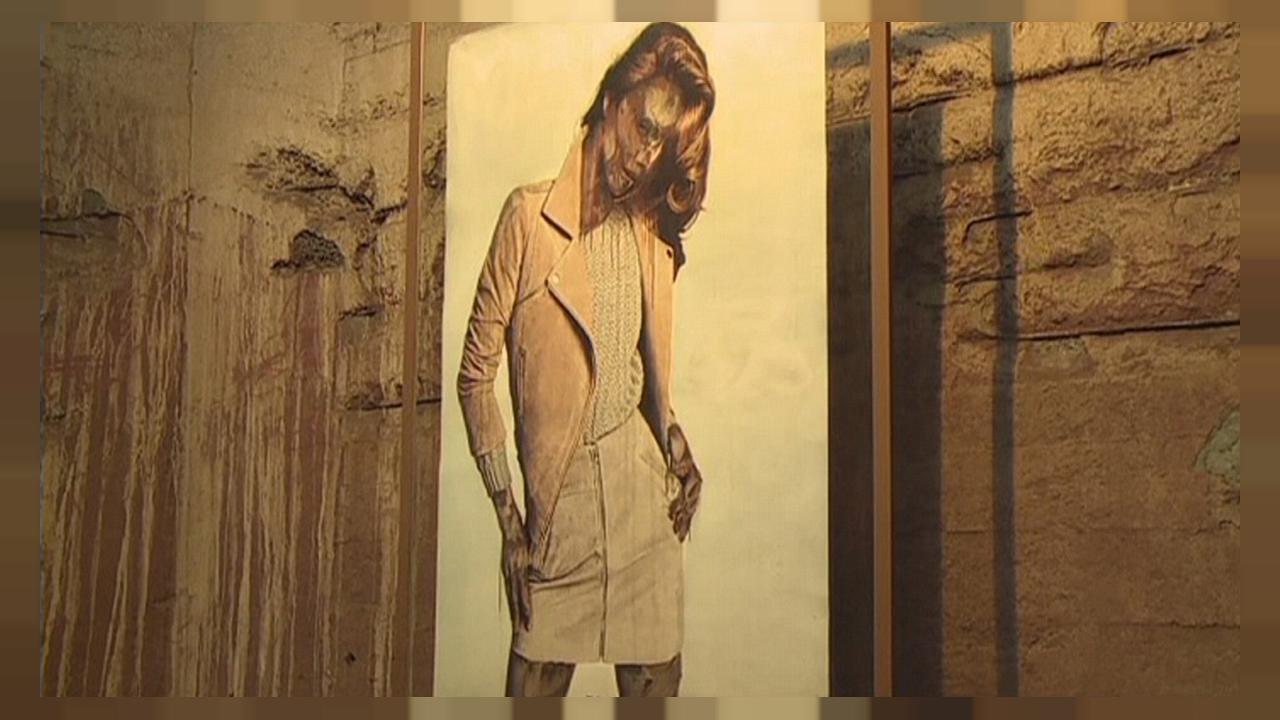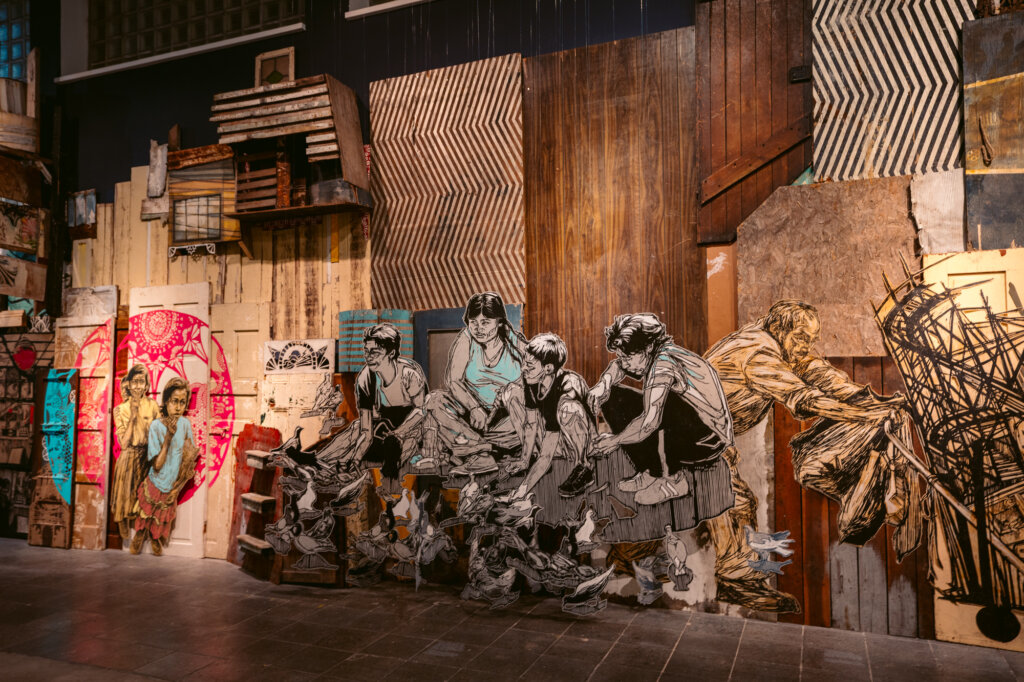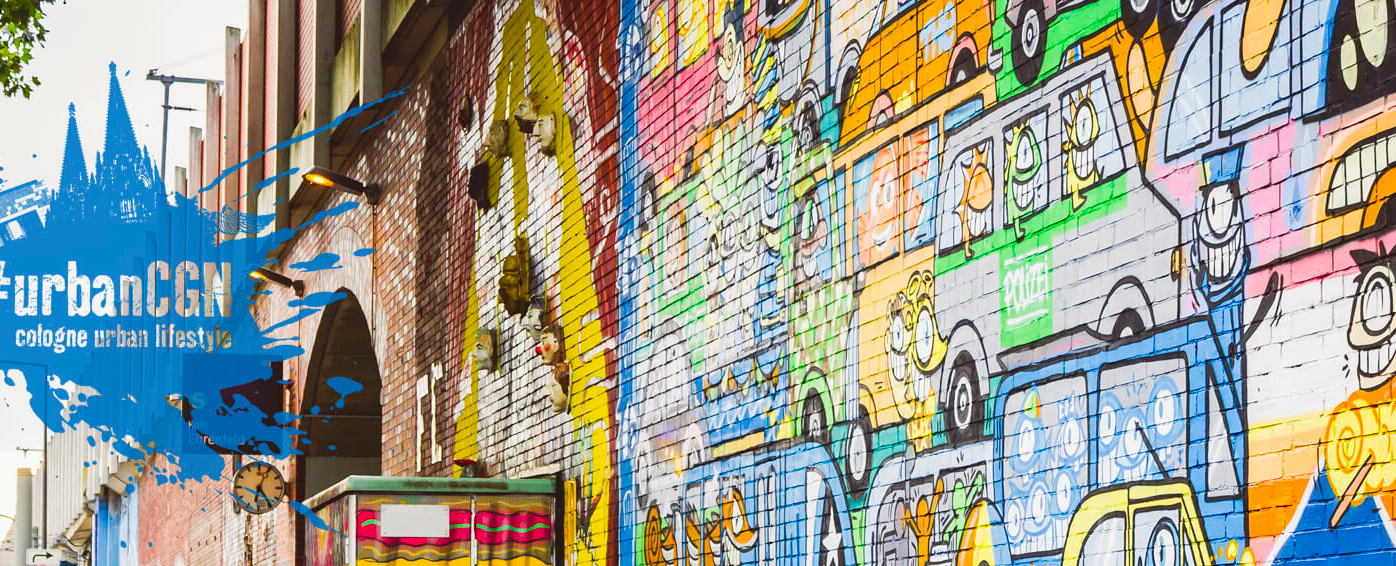Street Art invaded the inner city street space at the end of the last century. In Germany it has gained a strong foothold in urban cities and towns and is now recognised as a true art form even finding its way into some very quirky museums. Urban Art, which needs an urban environment, now has a self-fulfilling destiny to preserve this unstoppable genre and youthful energy. Flying horses, pop art bananas and fire hydrants with flower patterns: street art is taking over urban areas. But it’s not all about spraying or tagging. In many places, you will find art that catches the eye, such as yarn-bombed lampposts, bins with monster eyes or placards that employ techniques such as irony or alienation. Here is a creative foray into six exciting street art cities in Germany.
Cologne
Walking through Cologne with one’s eyes wide open, one is bound to encounter street art at almost every corner. No matter if large murals on facades or walls or small stickers, stencils and paste-ups on gates and lampposts – the urban space is bubbling over with creativity! And yet there are certain quarters and spots in the city, where one may discover a plethora of street art in all its variations. These hotspots are worth checking out not only once, since they are in a process of continuous change – almost daily old things disappear while new things are added. Ehrenfeld impresses with the greatest number of large-scale murals in Cologne. Here, one may discover outstanding artworks by internationally renowned street artists such as ROA, Herakut, Faith47, INTI, Tika, M-City or Interesni Kazki just as much as works by local artists like Captain Borderline, Huami or Rakaposhii. Friends of paste-ups, stencils, stickers and graffiti should also stop by the local hotspots at Heliosstraße, Lichtstraße and Körnerstraße.
Thomas Baumgärtel – alias: Banana Sprayer – is a well-known street artist in Cologne. He sprayed his first banana back in the 1990s. Now thousands of the pop art yellow fruits adorn walls throughout Germany and around the world. His message is mostly political, so it comes across as brazen and is intended to provoke. “Spraying bananas,” said the artist, “is an expression of my fight for art and freedom of speech.” A mindset shared by many underground artists.
Berlin
Street art has been elevated to monument status in Germany’s trendy capital. The East Side Gallery in Berlin’s Friedrichshain district uses a 1.3-kilometre section of what was once the Berlin Wall as its canvas. Street artists the world over have transformed the grey wall, a visual symbol of separation, into a brightly coloured monument to freedom and reconciliation. Its most famous paintings include The Fraternal Kiss by Dmitri Vrubel and a Trabant breaking through the cement by Birgit Kinder.
But street art culture in Berlin goes far beyond the creations on the Berlin Wall. The scene is huge. Even the big names in street art, including Banksy, Tristan Eaton, BLU and many others, have let their creativity run free on the walls of Berlin. Urban artworks, some of which are on a huge scale, can be predominantly found in the districts of Mitte and Kreuzberg. One of the most famous and sociopolitically controversial murals is The Pink Man by BLU. At first glance, it looks like a pink monster. On closer inspection, the viewer can see a cluster of several hundred naked men clinging on to each other.
Sea dog in XXL
Hamburg
The Affenfaust Gallery presents the largest Urban Contemporary Art exhibition in Northern Europe. Like many ‘global’ cities, Hamburg hosts an art festival, Knotenpunkt, that has a strong emphasis on street art. There are many pieces around the city that come from various editions of the festival. They tend to be statement pieces, with perhaps my favourite piece being Cross-section of a Black Widow by Nychos, an Austrian artist. More than 40 international artists took part in the most recent Knotenpunkt, in April 2021 attracting over 10,000 visitors to the city. Street art is big tourism in the 21st century. There’s even a street art memorial dedicated to Hans Albers, a famous blond man with an accordion, who sang fervent songs about the sea and the sailors’ burning desire, and who shaped the image of Hamburg’s red-light district.


Hall of Fame
Frankfurt
When junction boxes, bridges, concrete piers and fire hydrants are adorned with graffiti, posters, stickers or stencil art, some see it as criminal damage, others view it as art. The authorities used to come down hard on sprayers, but today they are often recognised as artists and the powers that be are more relaxed about their activities. In some places, it was suddenly decided that urban sprayers should have dedicated spaces for their creative compositions. The Ratswegkreisel Hall of Fame in Frankfurt is one of them. Countless graffiti, from the funny to the revolutionary to the satirical, have ignited a firework of urban art here. And yet astonishing feats have also been achieved beyond this dedicated area. The dynamic and vibrant Bull vs. Bear mural was created on Friedberger Landstraße to pay homage to Frankfurt’s status as a financial hub. The Flying Horses by world-famous graffiti artist Andreas von Chrzanowski, aka Case Ma’Claim, at Frankfurt East train station is also worth seeing. His subject is visualising motion. The recurring element of “running hands” can be found in his works in Amsterdam, Basel and in the Ostendstraße S-Bahn station in Frankfurt.

Animal Farm
Leipzig
“Is that art or can we get rid of it?” This pronouncement sums up the relationship many have with modern art, including street art. Viewers are increasingly learning to appreciate the lesser-known artworks that embellish the often-grey look of a city. Brushes, paint rollers and spray cans are also being used more and more often in Leipzig, the trendy metropolis in Saxony, and no bin, traffic light or road sign is safe. Connewitz, Südvorstadt and Plagwitz are the up-and-coming street art districts here. Political issues are often depicted in the street art here. Take the refugee crisis in the Mediterranean Sea as an example: In this instance, twelve artists worked on this piece on the corner of Arno-Nitzsche-Straße and Bernhard-Göring-Straße in Connewitz. It was named after the famous Animal Farm quote by George Orwell: “All animals are equal, but some animals are more equal than others.”
Scandal surrounding Wholetrain
Munich
Last but not least, a great place to see some “street art” (though not on the street!) is Munich’s Museum of Urban and Contemporary Art. This awesome museum is tucked away on a quiet street near Old Town, and always has very cool exhibitions and displays. We’ve been here a few times and have always been impressed.

Street art is the art form of the 21st century: spontaneous, blunt and at home in urban areas. Many works of art come out of a can in Munich, too. And passers-by can simply admire the work – without admittance fees or opening hours. Some appear and then disappear, others stay – these are the laws of this new, exciting and constantly changing art form. Munich can even boast about being one of the pioneers of street art. When the New York street art wave swept across Europe in the 1980s, many street artists in Munich got straight to it – even before Berlin. Back in 1985, a Munich school kid and his friends sprayed graffiti onto the entirety of an S-Bahn train. He was punished with a hefty fine – but today, under the pseudonym Loomit, he’s considered one of the most famous and important graffiti artists worldwide. New styles of urban art can be found in many places throughout Munich. Some of it is blatantly political, including Paint it Black by Shepard Fairey. This mural, which depicts an oil can in a cupped hand, takes aim at the oil companies. Munich has even compiled a Street Art City Map, a visitor guide on the most exciting artworks.


